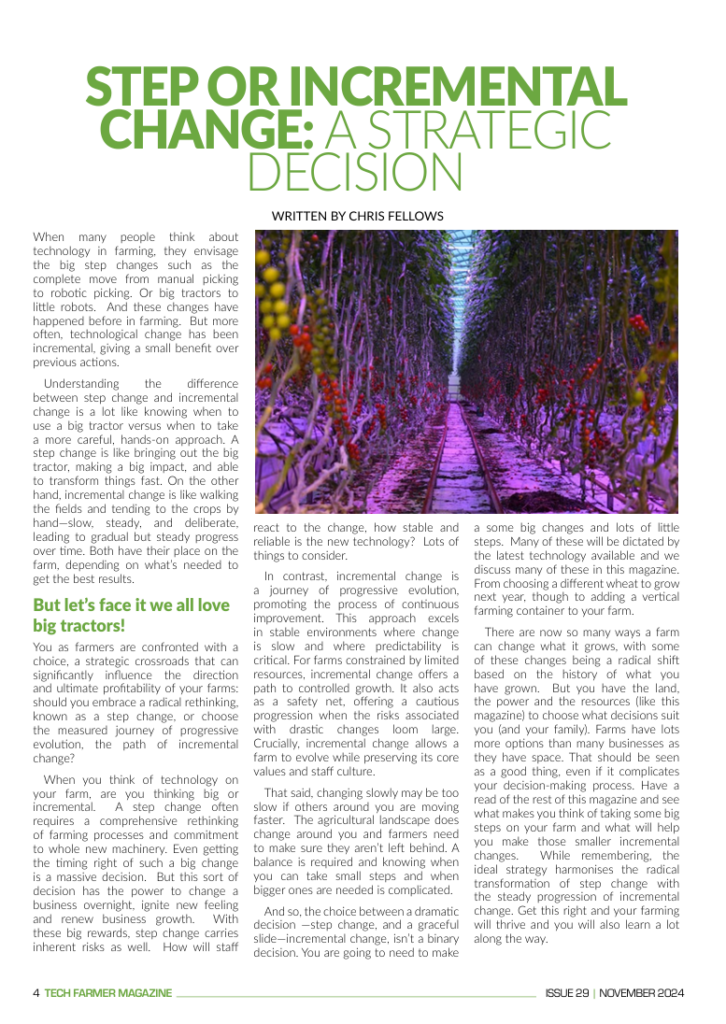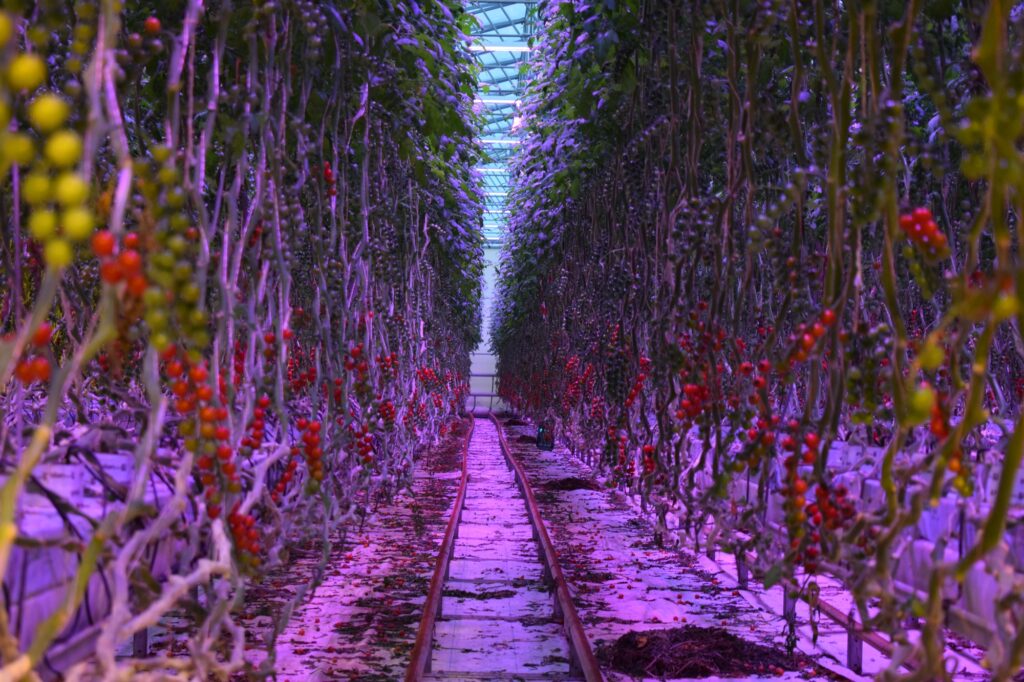When many people think about technology in farming, they envisage the big step changes such as the complete move from manual picking
to robotic picking. Or big tractors to little robots. And these changes have happened before in farming. But more often, technological change has been incremental, giving a small benefit over previous actions.
Understanding the difference between step change and incremental change is a lot like knowing when to use a big tractor versus when to take a more careful, hands-on approach. A step change is like bringing out the big tractor, making a big impact, and able to transform things fast. On the other hand, incremental change is like walking the fields and tending to the crops by hand—slow, steady, and deliberate, leading to gradual but steady progress over time. Both have their place on the farm, depending on what’s needed to get the best results.
But let’s face it we all love big tractors!
You as farmers are confronted with a choice, a strategic crossroads that can significantly influence the direction and ultimate profitability of your farms: should you embrace a radical rethinking, known as a step change, or choose the measured journey of progressive evolution, the path of incremental change?
When you think of technology on your farm, are you thinking big or incremental. A step change often requires a comprehensive rethinking of farming processes and commitment to whole new machinery. Even getting the timing right of such a big change is a massive decision. But this sort of decision has the power to change a business overnight, ignite new feeling and renew business growth. With these big rewards, step change carries inherent risks as well.
How will staff react to the change, how stable and reliable is the new technology? Lots of things to consider. In contrast, incremental change is a journey of progressive evolution, promoting the process of continuous improvement. This approach excels in stable environments where change is slow and where predictability is critical.
For farms constrained by limited resources, incremental change offers a path to controlled growth. It also acts as a safety net, offering a cautious progression when the risks associated with drastic changes loom large. Crucially, incremental change allows a farm to evolve while preserving its core values and staff culture. That said, changing slowly may be too slow if others around you are moving faster.
The agricultural landscape does change around you and farmers need to make sure they aren’t left behind. A balance is required and knowing when you can take small steps and when bigger ones are needed is complicated. And so, the choice between a dramatic decision —step change, and a graceful slide—incremental change, isn’t a binary decision. You are going to need to make a some big changes and lots of little steps. Many of these will be dictated by the latest technology available and we discuss many of these in this magazine. From choosing a different wheat to grow next year, though to adding a vertical farming container to your farm.
There are now so many ways a farm can change what it grows, with some of these changes being a radical shift based on the history of what you have grown. But you have the land, the power and the resources (like this magazine) to choose what decisions suit you (and your family). Farms have lots more options than many businesses as they have space.
That should be seen as a good thing, even if it complicates your decision-making process. Have a read of the rest of this magazine and see what makes you think of taking some big steps on your farm and what will help you make those smaller incremental changes. While remembering, the ideal strategy harmonises the radical transformation of step change with the steady progression of incremental change. Get this right and your farming will thrive and you will also learn a lot along the way.

